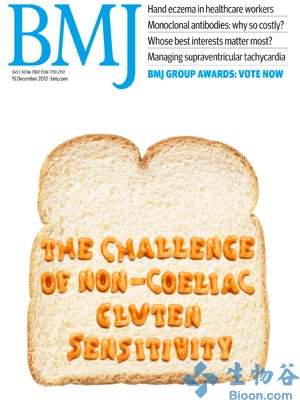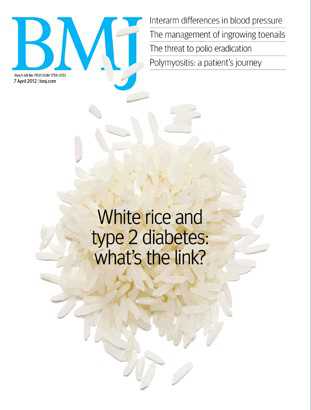BMJ:马路减速带有助诊断急性阑尾炎
2013-05-06 新华社 新华社
马路上的减速带与阑尾炎有什么关系?许多腹痛、疑似急性阑尾炎的患者都是被救护车一路飞奔拉到医院的,而车辆在路上经过减速带时不免要颠簸一下。英国研究人员发现,患者在颠簸中的反应有助于诊断急性阑尾炎。 英国牛津大学等机构研究人员在新一期《英国医学杂志》上报告说,最开始是偶然发现“减速带有助于诊断阑尾炎”,后来专门进行了统计研究,询问了64名在乘车前往医院途中经过了减速带的患者的情况,其中大部分人在颠簸
马路上的减速带与阑尾炎有什么关系?许多腹痛、疑似急性阑尾炎的患者都是被救护车一路飞奔拉到医院的,而车辆在路上经过减速带时不免要颠簸一下。英国研究人员发现,患者在颠簸中的反应有助于诊断急性阑尾炎。
英国牛津大学等机构研究人员在新一期《英国医学杂志》上报告说,最开始是偶然发现“减速带有助于诊断阑尾炎”,后来专门进行了统计研究,询问了64名在乘车前往医院途中经过了减速带的患者的情况,其中大部分人在颠簸时感觉腹部疼痛加剧。
最终诊断结果显示,在34名因急性阑尾炎引起腹痛的患者中,有33人都在车辆经过减速带时感觉腹痛加剧,两者之间的相关性非常高;另一些感觉腹痛加剧但没有确诊为急性阑尾炎的患者,后来也证实可能有其他比较严重的情况,如卵巢囊肿破裂等。
研究人员海伦·阿什当说,用患者在车上经过减速带时的感觉来帮助诊断急性阑尾炎,听起来是有些奇怪,但研究结果确实表明这是一个良好的诊断方法。虽然这种方法不能保证完全准确,但它可以成为诊断方案中的一部分。
急性阑尾炎是一种常见病,患者往往出现剧烈腹痛,如果不能及时诊断出腹痛原因,有可能带来比较严重的危险。

DOI:10.1136/bmj.e8012
PMC:
PMID:
Pain over speed bumps in diagnosis of acute appendicitis: diagnostic accuracy study
Helen F Ashdown, academic clinical fellow in general practice1, Nigel D’Souza, specialist registrar in general surgery2, Diallah Karim, foundation trainee2, Richard J Stevens, senior medical statistician1,Andrew Huang, consultant colorectal and general surgeon2, Anthony Harnden, university lecturer in general practice1
Objective To assess the diagnostic accuracy of pain on travelling over speed bumps for the diagnosis of acute appendicitis. Design Prospective questionnaire based diagnostic accuracy study. Setting Secondary care surgical assessment unit at a district general hospital in the UK. Participants 101 patients aged 17-76 years referred to the on-call surgical team for assessment of possible appendicitis. Main outcome measures Sensitivity, specificity, positive and negative predictive values, and positive and negative likelihood ratios for pain over speed bumps in diagnosing appendicitis, with histological diagnosis of appendicitis as the reference standard. Results The analysis included 64 participants who had travelled over speed bumps on their journey to hospital. Of these, 34 had a confirmed histological diagnosis of appendicitis, 33 of whom reported increased pain over speed bumps. The sensitivity was 97% (95% confidence interval 85% to 100%), and the specificity was 30% (15% to 49%). The positive predictive value was 61% (47% to 74%), and the negative predictive value was 90% (56% to 100%). The likelihood ratios were 1.4 (1.1 to 1.8) for a positive test result and 0.1 (0.0 to 0.7) for a negative result. Speed bumps had a better sensitivity and negative likelihood ratio than did other clinical features assessed, including migration of pain and rebound tenderness. Conclusions Presence of pain while travelling over speed bumps was associated with an increased likelihood of acute appendicitis. As a diagnostic variable, it compared favourably with other features commonly used in clinical assessment. Asking about speed bumps may contribute to clinical assessment and could be useful in telephone assessment of patients.
(责任编辑:haozongdi)
分享到:本网站所有内容来源注明为“梅斯医学”或“MedSci原创”的文字、图片和音视频资料,版权均属于梅斯医学所有。非经授权,任何媒体、网站或个人不得转载,授权转载时须注明来源为“梅斯医学”。其它来源的文章系转载文章,或“梅斯号”自媒体发布的文章,仅系出于传递更多信息之目的,本站仅负责审核内容合规,其内容不代表本站立场,本站不负责内容的准确性和版权。如果存在侵权、或不希望被转载的媒体或个人可与我们联系,我们将立即进行删除处理。
在此留言










#BMJ#
71
#急性阑尾炎#
79